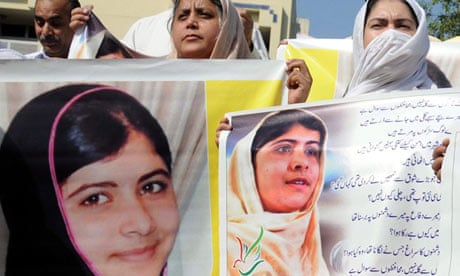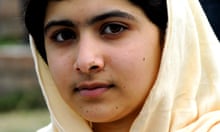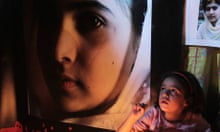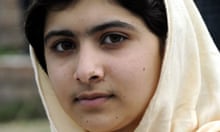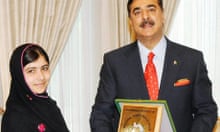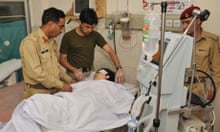From the diary of Malala Yousafzai, dated 3 January 2009:
"I AM AFRAID.
I had a terrible dream yesterday with military helicopters and the Taliban. I have had such dreams since the launch of the military operation in Swat."
This is an excerpt from Malala's first diary entry, who was in seventh grade when she volunteered to write about the Talibanisation of the Swat valley for BBC Urdu. Her entries describe sneaking to school in her favourite pink dress because the school uniform would draw the militants' attention, only to be told her bright attire might do the same. Her diary ends as school closes "indefinitely" for winter. Pakistan's army then started a military operation against the Taliban, ejecting them in late 2009, temporarily displacing about 2 million local Swatis.
The international media followed Malala's story. She has been nominated for several awards and uses public platforms to speak about things she feels passionately about: rebuilding Swat and focusing on education. She said at a conference earlier this year that "democracy is the best rule. This country needs new leaders. I want to study the law and I dream of a country in which education prevails and no one sleeps hungry."
Perhaps such words keep her in Taliban crosshairs: they claimed responsibility for an assassination attempt against the young activist yesterday. After complicated surgery, doctors say she should recover, but the teenager has a lot to assess later.
Will she continue to campaign for education and, furthermore, would she be able to? When unable to protect vulnerable citizens who get international attention, Pakistan's government usually offers a free ride abroad. It also speaks volumes about a geopolitical issue careering out of control for the militants, their advocates, and the Pakistan government when militants take it on themselves to attack a 14-year-old girl because she was seen to be "anti-Taliban" and "secular".
Malala showed admirable, even rare, bravery by writing a public diary against the brutal Taliban. However, her demand – the freedom to study for all and to develop a country that focuses on education – isn't so unusual for women who live in patriarchal conservative societies such as the province of Khyber Pakhtunkhwa, or KP, where she resides.
The people of KP often live segregated from the opposite sex, unless related by blood or marriage. Religion is a central thread in Pakistan, but conservatives and liberals equally follow their faith. It's not purely an adherence to religion that makes Malala's heartland rather conservative, but a historic tribal culture rooted in certain values. Such values should not be confused with the barbarianism of the Taliban. Women dress modestly in voluminous clothes, and tend to be less visible in the public eye than men, but by no means are the women meek nonentities – Pashtuns are known to be fiery, proud folks. Malala herself was named by her father after a national folk heroine who fought alongside an Afghan general against British troops in 1880.
People often see the covered head or shapeless attire of women and assume they are also voiceless, that the head patriarch must have stamped out their identity. But there is a distinction between terrorism-driven oppression and conservative values, which happily evolve and branch out if given that space. Malala's parents are an example. They respect regional norms, but want their little girl to learn, and become a participatory citizen.
Being a female and an activist is hard in Pakistan. There are several layers that need to be pushed through to be heard, and there are few promises of safety in a society that's imploding and then torn asunder by foreign strikes. Pakistani society also suffers from the great divide between the fortunate who can be brazen and loud, tweeting about online petitions from the safety of relatively cocooned environs, and those who grow up like Malala, even without coming under attack from militant terrorism. And within that vast spectrum reside several shades of Pakistani women, including those who fit in more with the Code Pinkers than the Malalas.
Being a female with conservative values, while being an activist, is even harder. It draws more ire from unhinged fanatics who assume covered heads mean bowed heads. But Malala doesn't want to play to some western-backed or Taliban-loved stereotype. She shows us that there are voices out there, in Pakistan, that need to be heard, if only to help the country find democracy that is for and from the people, all the people. This sad, small window will reveal if Pakistan can ever come together to keep these and more voices from being silenced, or if Malala, like many others, will just remain a fringe player.
